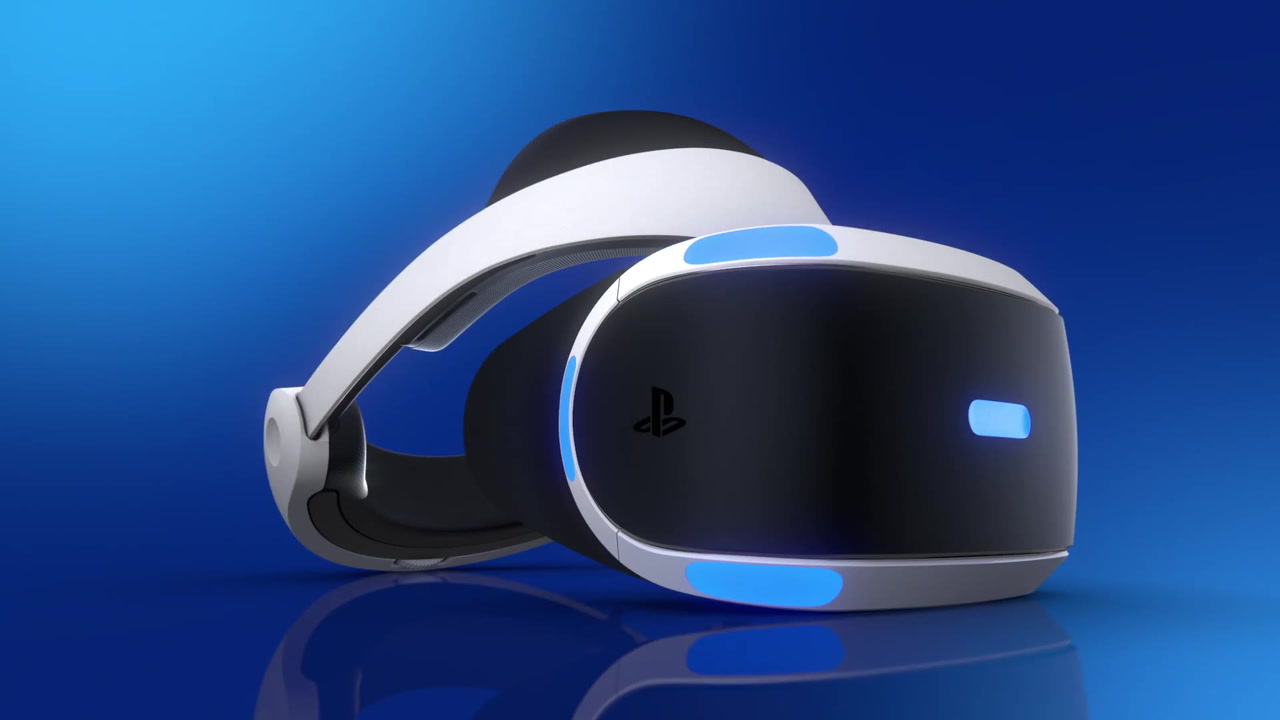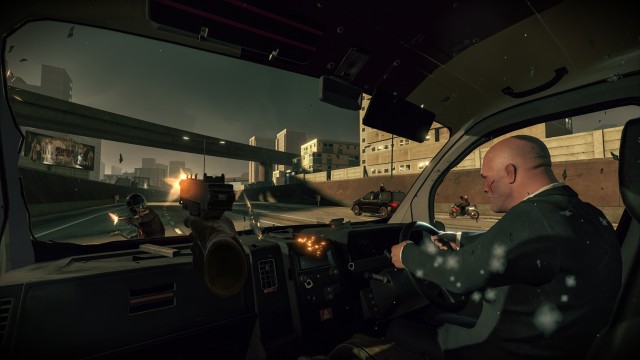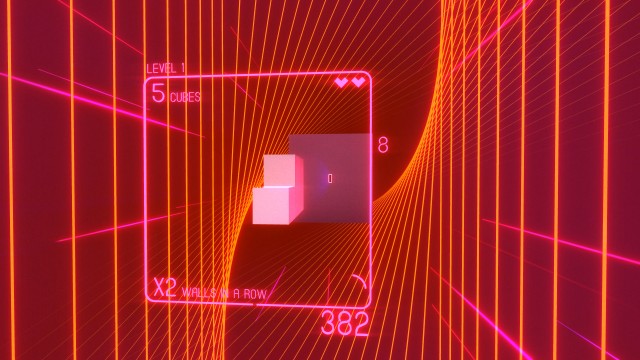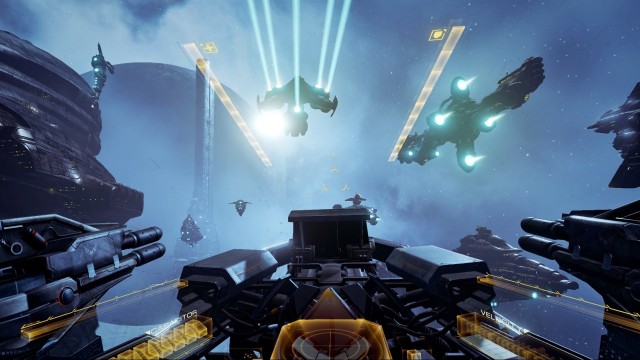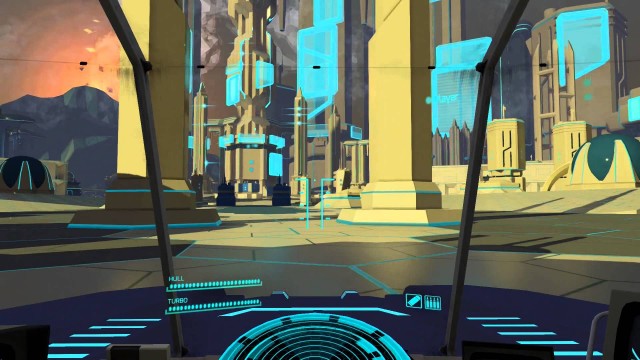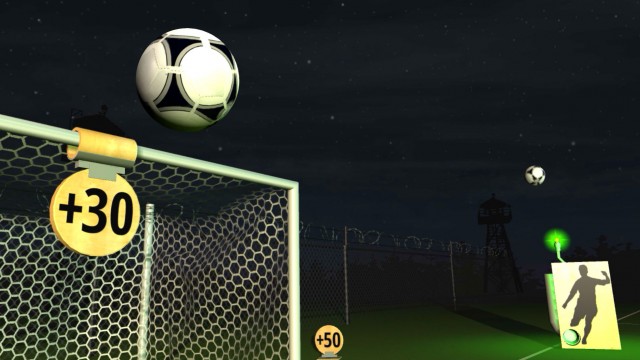Sony has begun hosting promotional trial events for its upcoming and highly anticipated virtual reality headset peripheral, PlayStation VR as of this weekend, which will allow a lucky few to test out the technology in advance of the headset’s October release… If you know where and when to find it, that is! In case the PlayStation VR trial event isn’t in your location however, or perhaps you just can’t make it, and are curious about the headset and how it’s shaping up, I got lots of quality time with the headset’s unfinished beta build, and was able to test out six game demos that show off the device in a variety of ways.
Before the games however, is the question of the device itself. Is it comfortable? Is it functional? Is it awkward? Well, fortunately, PlayStation VR seems to be a pretty smartly designed headset, especially for its (relatively) decreased price in comparison to competitors like the Oculus Rift and the HTC Vive, which also require a pretty expensive high-end gaming PC to function as well! All you need to use a PlayStation VR meanwhile is a PlayStation 4 console, a PlayStation Camera, and, depending on the game you’re playing, you may require a PlayStation Move controller or two as well, although the headset itself also possesses some motion-tracking capability that sometimes renders a controller unnecessary. The rumblings about the PlayStation VR allegedly barely functioning on launch model PlayStation 4’s, and that being a big part of the rationale behind the 4K-enabled PlayStation 4 NEO that’s in development right now, also appear to be untrue, since the demo unit consistently ran perfectly on what were obviously launch model PlayStation 4’s. That could be because the headset has allegedly had an extra internal graphics processor added into it since its announcement though.
There were a handful of hiccups here and there, obviously, since the games are in beta and the headset itself is still being tinkered with by Sony before its final build launches to the public, but these were fairly minor during my demonstrations. A few demos were temporarily out-of-focus, some had bizarre lighting glitches that occasionally cropped up, and there were a few instances where the head-tracking calibration got a little bit off-kilter and finicky, but these are all issues that can be easily ironed out before the headset’s public release in October. Beyond these minor disturbances to the immersion, the headset’s performance and functionality seems to work exactly as advertised, and it does seem to accomplish its ideals of somewhat more affordable, but still high-quality virtual reality gaming for one’s home console environment.
What is definitely great about PlayStation VR already though is the comfort of the headset, which is very easy to put on, adjust, and place in such a way that it minimizes head strain. The headset comfortably latches behind your head when you’ve balanced it to your liking, and the adjustable latch allows it to accommodate many different skull sizes and shapes. Initially, there is a small feeling of bulkiness around your skull, but you’ll quickly adjust to it and stop noticing it before long. I also didn’t feel ill or disoriented at any point while using the headset (though the reps were prepared in case that happened, telling me what I could do if I ever felt sick during the demos), even if I did feel a wee bit woozy after the sixth demo, though that was very minor. It’s just a sign that one shouldn’t use PlayStation VR for hours and hours in an extended gaming binge, but that’s probably common sense.
Beyond this, there’s also a small open space in the very bottom of the device that lets you look down at your controller if necessary, plus, the device doesn’t go around your ears, so you can still hear the real world around you, even though the Sony reps tried to mask that for me by putting on high-end Sony-made noise-cancelling headphones, which, admittedly, did make the demos even more incredibly immersive. Predictably, I, and the other previewers did look pretty amusingly silly while trying out many of the games with the headset on us, looking and sometimes reaching and swinging around, interacting with things that were invisible to everyone around us (beyond a television display that showed spectators a flat view of what we were seeing through the headset), but that’s part of the fun, at least, in my opinion. For what it’s worth, while observing other previewers, I also felt that PlayStation VR at least looks pretty slick as far as a virtual reality headset goes, appearing bright and stylish, and making the user appear to others in a much cooler fashion than many competing VR headsets do. The previewing area was also large and free of obstructions, appropriately. That should also be common sense when you’re using PlayStation VR in your gaming area, especially around others; Leave lots of room, and clear out any clutter!
With the rundown on the hardware out of the way, let’s talk software! As I said, there were six demos to preview that showed off how PlayStation VR enhances gaming, in ways that aren’t truly possible when playing games normally on a television, on a PlayStation 4 or otherwise. The headset is technically functional with all games, movies and television episodes that you are able to play or view on your PlayStation 4 too, though merely by creating a more isolated ‘Cinematic Mode’, even if that wasn’t part of the demonstration, unfortunately, beyond a quick glimpse of the familiar PlayStation 4 menus that didn’t have the same 360-degree environmental effects as the dedicated PlayStation VR games, and are once again merely shown as flat displays through the headset.
Speaking of, in all six games demonstrated, a very impressive 360-degree immersion effect is achieved when using PlayStation VR, with players even able to look directly behind them, or in any direction, to see environments that they appear to be fully immersed in, even beyond what’s in front of them. In fact, quite a few games actively encouraged you to look around beside you, above you, below you, and behind you, nicely highlighting that a big advantage with virtual reality gaming is no longer restricting your viewpoint to just being straight ahead, like it is on a television or monitor display. Frankly, it might be a good idea to use PlayStation VR with a chair that can spin on a dime, which can help you react extra quickly to your imaginary environment’s many angles.
On that note, the first demo, and the simplest, was Ocean Descent, which was basically a non-interactive tech demo that was all about displaying PlayStation VR’s 360-degree viewpoints. It’s smart to start with this demo, since gamers are conditioned to primarily focus on what’s directly in front of them on the screen, like I said. Here, you can get used to looking around and taking in the virtual environment, a beautiful underwater showcase with undersea creatures both benign and hostile. The latter part of this brief demo even has a great white shark appear to chew through your protective cage, nicely putting you on edge, and helping up the immersion further. While it’s a shame that this demo wasn’t truly interactive at all, and is only ‘controlled’ by moving your head around and looking at what’s around you, it’s a good way to test the VR waters, pun not intended, especially if you’re unsure about the technology possibly making you feel ill.
The second demo, which will be part of the PlayStation VR Worlds minigame collection that is optionally packaged with PlayStation VR in the ‘Launch Bundle’, was The London Heist, which is normally exclusively offered to lucky customers at EB Games/Gamestop locations during the promotional tour. The London Heist was where I ran into my first calibration hiccup, since the demo had me playing the game with dual PlayStation Move motion controllers (apparently, you can play this game with a regular Dual Shock 4 controller, but I never had a chance to test the difference), and was the only demo that used PlayStation Move.
Originally, my virtual ‘hands’ were flipped upside-down, and the rep had to restart the demo and re-calibrate them. Once that had happened though, I quickly got to driving alongside a cranky criminal, right before being ambushed by several gunmen on motorcycles and in vans, as we all drove down a highway. Using the PlayStation Move controller in my right hand, I aimed and fired using the Move Trigger, which felt very immersive and comfortable, and is probably more fun than using a regular Dual Shock 4 controller anyway. The entire demo just had me aiming and shooting, though it failed to explain how I reload my SMG, which is apparently done by using the Move Trigger on the PlayStation Move controller in my left hand, to grab a clip, after opening the glove compartment in front of me, then move it by my right hand as if I was reloading a gun in real life, which the rep had to explain to me. It was kind of cool, honestly, even though the demo was fairly brief, and very simple. This was also a demo that occasionally suffered from unfocusing the graphics as well, likely due to me being the first user of this particular PlayStation VR headset, but the graphics did seem to stabilize as the demo was winding down, and for the most part, the game looks and sounds fine for PlayStation 4 standards, if not exemplary.
The third demo, and one of my personal favourites, was for Super Hyper Cube, a puzzle game that challenges players to lean around a dropping block to try and assess a hole that it’s falling into, then use the Dual Shock 4 controller’s analog sticks and shoulder buttons to re-position the block so that it goes through the hole. This is easy at first, but every time you successfully get a block formation through a hole, more blocks get tacked onto it, and more ornate shapes start forming. This awards you more points for successfully slotting in the blocks, but also increases the chances that you’ll fail to align the blocks right, which will either shave blocks off of your formation’s outcroppings, or, failing that, will result in a Game Over. This game is another simple one, but it’s amazingly addictive, and I actively tried to stay playing as long as I could, ultimately slotting in at third of eight positions on the demo’s leaderboard (FYI, this was the only demo with a leaderboard). Puzzle gamers are definitely bound to have a lot of fun with this game when PlayStation VR launches to the public!
The fourth demo was the one demo that was for an established virtual reality game that’s already available for competing headsets; EVE Valkyrie. EVE Valkyrie, a multiplayer-driven sci-fi-themed dogfighting game, was released for Oculus Rift back in March (it was even bundled with pre-ordered Oculus Rift headsets), and is coming to PlayStation VR as a launch title in October. This was another fairly straightforward demo, and as with Super Hyper Cube, the demo was solo-only, unfortunately, but it also offered the most intense and demanding virtual reality showcase, as players are launched into space amidst an armada of ships, and are then tasked with looking and flying around in 360 degrees, to shoot down enemy fighters and missiles, and protect their allies. This was another highly enjoyable demo, even if the game will obviously be familiar to anyone who has already played it in its Oculus Rift incarnation. Regardless of how you play, the demo ends with a teasing cliffhanger that appears to have your fleet wiped out at the end, but the head-tracking and responsiveness of the gameplay is excellent on PlayStation VR, as is the immersion, making EVE: Valkyrie arguably one of the best core gamer options for PlayStation VR’s launch later this year.
The fifth demo, and my other big favourite, was for Battle Zone, a game that is initially launching for PlayStation VR as a timed exclusive, and will apparently expand to competing headsets later. Battle Zone places you within a tank in a cyberspace-esque environment that looks like a modern, PlayStation 4-approved rendition of an 80’s arcade game, or, to put it another way, like you just stumbled onto The Grid from Tron. This demo was a huge amount of fun, tasking you with using the Dual Shock 4 controller’s analog sticks to move and aim your tank, then using the shoulder buttons and face buttons to use a variety of weapons against various types of enemies. The simple and surprisingly agile controls made the tank fights very enjoyable, and the addition of virtual reality made it especially engaging to manage your environment and take on threats from all angles. I not only fought against other tanks, but also turret towers and aerial drones, and the way that all of them demand different arsenals and movement styles to best take down did quite a lot with a simple game foundation. This is another PlayStation VR game that even many hardcore gamers will want to prioritize when the headset launches in October!
Finally, the sixth demo, Head Master, moved me to a cheeky sports-themed environment, but sadly, this was one of the less impressive demos. It was… Fine, technically, and was a fair enough showcase of PlayStation VR’s head-tracking capabilities, especially since you play the whole game just by moving your head, and don’t even use a controller in this case. The gameplay of constantly moving your head in the same nodding motions to headbutt soccer balls into various parts of a net gets pretty one-note before long though, especially since the headset’s head-tracking was pretty spotty after the gameplay cranked up. It was spotty to the point where moving my head on an angle would send the ball flying in the opposite direction, which doesn’t make any sense from a physical standpoint, and takes you out of the game, on top of highly annoying you if you’re actually trying to play well. Truth be told, the best part about this demo was its presentation, since this game was at least one of the better-looking game demos, and its humourous commentator, who pretends that you’re part of an eccentric, Portal-esque academic testing initiative, did actually elicit quite a few chuckles from me. Head Master has an interesting idea behind it, but if the game’s going to be passable, the headset’s head-tracking really needs to be tweaked and improved. At this point, it’s too demanding on the headset and its calibration.
With all that done, I must say that I came away from this first test run of the unfinished PlayStation VR build and some of its unfinished beta-build games quite impressed, and really looking forward to the headset’s proper launch this Fall. I obviously enjoyed some demos more than others (like I said, Super Hyper Cube and Battle Zone seemed to be the best mix of fun gameplay, smart design and sharp use of the PlayStation VR technology), but overall, I felt the headset was easy to use, comfortable to wear, and never made me feel overwhelmed, sick or pained, even considering that I have Asperger’s Syndrome, which is pretty impressive.
That said though, PlayStation VR doesn’t magically absolve the shortcomings of virtual reality when it comes down to it either, since even this, “More affordable” headset is pretty pricey (especially for us Canadians, where it’s priced at a mean minimum of $549.99 CDN at launch, $100 more than an entire PlayStation 4 console!), it will still make people that suffer from motion sickness and/or Vertigo feel ill and discomforted, and even those that do feel fine when they use the headset won’t be able to do so for more than a couple of hours without starting to perceive a hangover. That’s before the Sony reps firmly stating that anyone under the age of thirteen shouldn’t even use PlayStation VR at all too, since it could stunt the vision development of children, even more intensely than Nintendo’s 3DS handhelds, which warn that the 3D effect shouldn’t be used by anyone six years old or younger, for the same reason. That’s to be expected though, as PlayStation VR does feel like something big, unique and revolutionary, and the most open-minded PlayStation 4 owners with at least a considerable disposable income, are bound to enjoy it quite a lot when it finally releases to the public on October 13th of this year.
Keep booting up Eggplante for all major news and updates on PlayStation VR, and other PlayStation hardware announcements.

